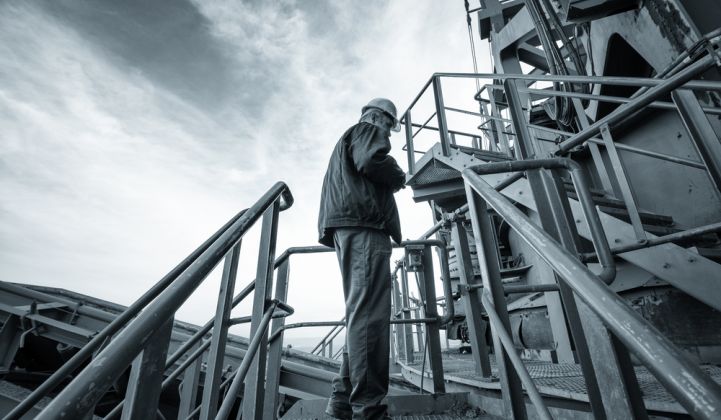On Monday, presidential candidate Donald Trump called for policies designed to put coal miners and steelworkers back to work. The decline of the U.S. coal industry is largely out of the president’s hands, since it is influenced by global markets and the advent of cheaper energy alternatives. But retraining people in the struggling coal industry is still very much within the president's purview.
There is another way for coal workers to make a living, according to a new study from Michigan Technological University and Oregon State University, published in Energy Economics.
It's in solar.
In states with the most coal jobs, many workers could be retrained for the growing solar PV industry -- some at a cost of just a few thousand dollars. For many coal companies, even those filing for bankruptcy, the cost of retraining all employees would be less than a year’s pay for the CEO.
The study noted that the CEO of Consol Energy earned about $14 million in 2012, more than enough to retrain all of the company’s employees for jobs in the PV industry. Arch Coal, which has filed for Chapter 11 bankruptcy, paid its executives and directors more than $29 million in the year leading up to its bankruptcy filing, according to The Wall Street Journal.
While the study touched on executive compensation, the bulk of the research looked at the state-by-state costs and the options for funding private and public retraining programs.
The cost of retraining approximately 90,000 workers in coal production would range from $180 million in the best-case scenario to more than $1.8 billion in the worst-case scenario.
The highest cost would be in West Virginia, which has the largest number of coal workers. The study found the average cost of a retraining program for a coal company would equate to about 5 percent of revenue. Additionally, the study noted that the externalities of the coal industry, such as public health costs, are far higher than any cost incurred to move people to cleaner energy jobs.
In the best-case scenario, the employees whose roles aren’t specific to the coal industry, such as secretaries and electricians, can find jobs in other industries, while the worst-case scenario assumes every employee currently in the coal industry would need to be relocated.
Of course, not every single coal job would have to be recreated in another industry. Many coal-fired power plants will continue to operate for decades in the U.S., and there is still an international market (albeit a shrinking one) for coal.
There are already more solar jobs than coal jobs, and the growth of the solar industry could absorb many coal workers in the next 15 years, according to the researchers.
“The writing on the wall for the coal industry is clear,” wrote Joshua Pearce, a study co-author and associate professor of materials science and engineering at Michigan Technological University, in Harvard Business Review. “Young coal workers, in particular, should consider retraining for a job in solar now.”
The recommendations come with significant caveats, however.
Local governments would have to acknowledge and accept the demise of an industry that they have long supported.
Leading coal states such as West Virginia and Kentucky do not rank in the top 35 solar states, according to GTM Research. Many industry employees would have to relocate unless the local solar market improved substantially.
Training would need to begin sooner rather than later. Some retraining and certification may take as little as three months, but other solar-specific training would require new degrees that could take up to four years to complete. The upside is that many of the jobs in the solar industry offer compensation similar to their counterparts in the coal industry, which has provided some of the best-paying jobs in the regions where they are located.
But solar is not the only other clean energy industry that could provide a safety net for coal workers. Wind markets in states like West Virginia and Wyoming are much more robust than solar.
Bringing clean energy jobs to the rural regions that support thousands of coal workers would take a concerted effort from both state and local governments. For example, some of the resources already available from the federal government can take up to a year to get to miners awaiting retraining, according to Pennsylvania’s PublicSource.
Hillary Clinton has proposed a broad range of measures to bring clean energy jobs, including solar, wind and hydro, to coal country. Any additional efforts at the federal level would need to begin within months, not years.
But given that there are similarities across many energy industries, some coal workers say they would welcome the opportunity to shift to clean energy.
“If they’re going to use energy alternatives, why can’t they bring a solar panel plant here, or train us...to install them in the field? Coal miners are some of the most versatile people here on the planet," former Emerald coal miner Bob Wilson told PublicSource in a June story about the future of Pennsylvania’s coal miners. "We’ve all run equipment, done welding, fabricating. We’ve built million-dollar belt drives from the ground up. We can do this stuff with a little bit of help.”



